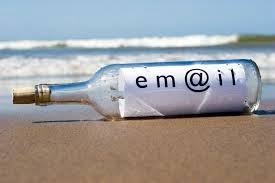Which email should I use?
Before you start setting up your email, you need to decide on two things: which email protocol should I use and which email client software am I going to use?
This sounds technical ’email protocol’, but it’s really very simple. Don’t worry, we’ll make it easy!

Which email protocol should I use?
There are two main email protocols: POP3 and IMAP. POP3 stands for Post Office Protocol (the ’3′ stands for version 3 which is the current version) and IMAP stands for Internet Message Access Protocol. If your email is part of a corporate email arrangement, then the chances are that you will be connecting to a Microsoft Exchange server which is different. We do not cover Microsoft Exchange setup here because that will be down to your IT department and configured for your organisation.
What’s the difference between the protocols?
On the face of it, there is no difference, they both ‘work’, but they really are different. It is really important that you make the right decision BEFORE you set up your email. To do that you need a tiny bit of understanding – not technical though, we promise! Email protocols are important to get right and much easier to get right at the beginning.
When somebody sends you an email, that email gets sent to your email address on the server that hosts your email. It sits in that server until you come along using a computer or phone, to collect it. This is where the difference is between POP3 and IMAP. If you use POP3, then when you connect to your email server, you will collect the message from the server and transfer it to your device, wiping it off the server. If you use IMAP, then the process is identical except that you leave the original on the server. So, the one main difference is that if you choose IMAP, then your email server is holding your mail for you. That means two things:
- that you will have a limit as to how much email you can store. For many people, that’s not a problem; for others, who like to keep everything forever, it will be a problem because eventually you will hit the storage limit and then need to decide which email to lose and which to keep.
- you will only have access to your email when you have a connection with the server. That means that if you need to refer to your email when you are in a bad reception area, you won’t be able to.
The method you should choose will depend on how you prefer to get your email. In simple terms, if you want to get it on lots of devices simultaneously, then you should probably choose IMAP. You know that it will be there for as long as you need it to be and you can get it on your phone, on your tablet and on your desktop as well as on webmail. If all you do is to use a single desktop, then POP3 is probably better. If, on the other hand you prefer to do everything on your tablet or phone, then IMAP is probably the route to choose.
Hopefully this is enough information to let you decide which email protocol you should be using and now you need to decide which software you are going to run. Click here to go to the ‘Choose your software‘ page.
